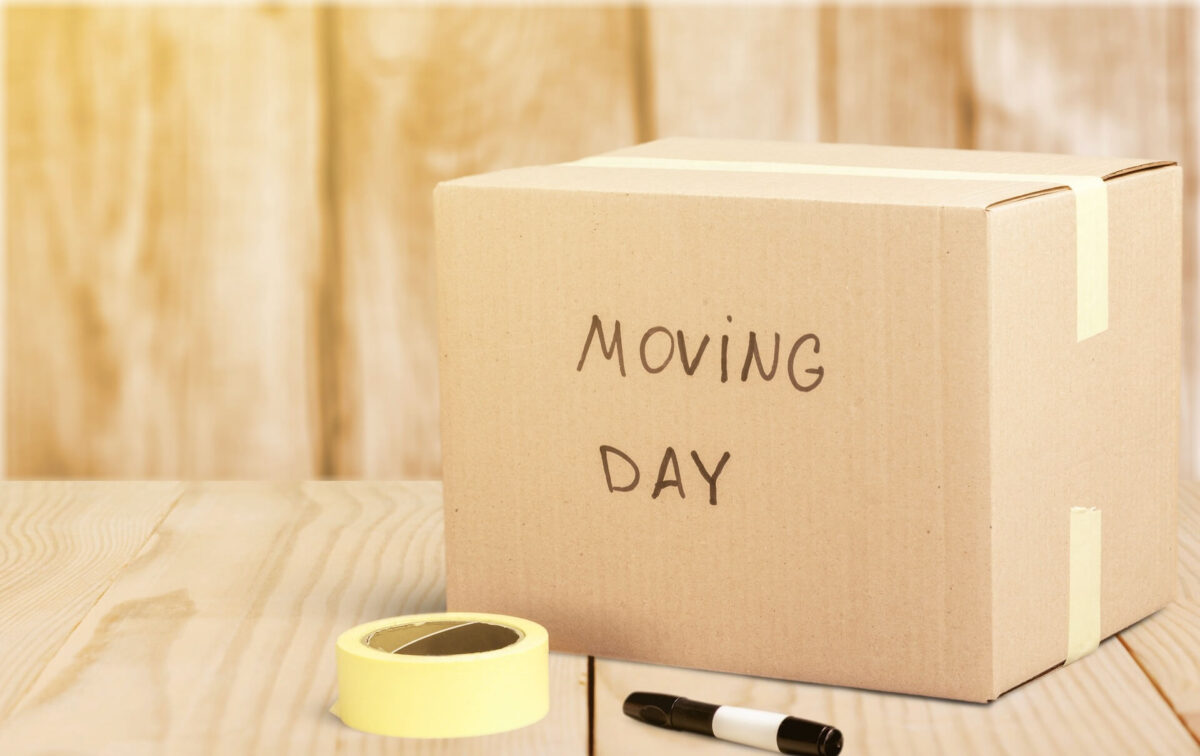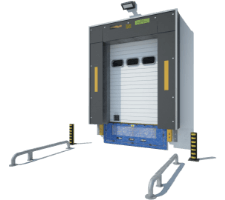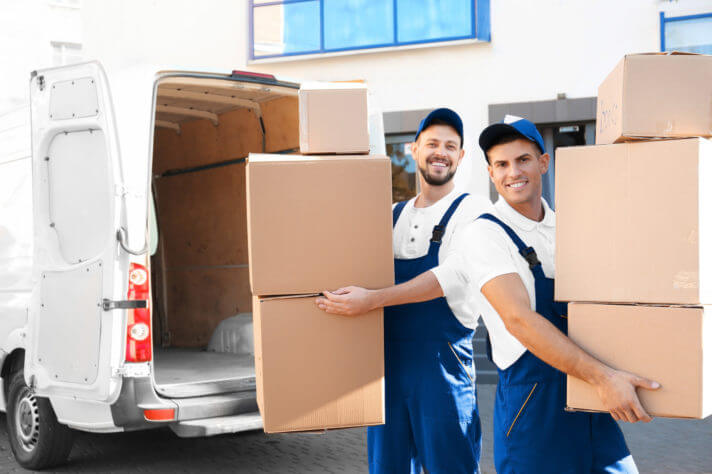When crafting a packing schedule, start by assessing your needs, setting a relocation date, and evaluating the size of the current residence and available space in the new one. Customize the boxing-up plan and break it into manageable bits. Downsize and sort through belongings, gather enough packaging supplies, and get ready for the big day.
A Stress-Free Packing Schedule for Moving: Your Ultimate Guide
Setting sights on a new home? Don’t let the boxing-up process dampen the excitement – our guide is here to help streamline the whole process. Navigate the relocation maze with our efficient packing schedule for moving, designed to make every step feel effortless. It’s more than just boxing up items. It’s about crafting a seamless journey and making this adventure a breeze.


Assess Your Needs Before Creating a Packing Schedule for Moving
This initial evaluation involves taking a thorough inventory list of all your belongings, differentiating between what’s essential and what can be sold, donated to charity, or discarded. By doing so, you eliminate unnecessary clutter and reduce the volume of items to transport. Furthermore, assessing your needs helps in identifying items that might require special boxing-up attention, such as heirlooms, artwork, or electronics.
Evaluate the Size of Your Current Home
Measure the total square footage, noting the number and sizes of rooms, storage spaces, and outdoor areas. Assessing your home’s size helps in determining the volume of belongings to relocate, renting the right-sized relocation truck, and comparing space in potential new homes. Ensure you make a comprehensive home inventory of all spaces, including attics, basements, and the garage, to get an accurate understanding of your crib’s dimensions.
Determine Your Moving Date
Choosing the optimal relocation date involves a blend of personal, financial, and logistical considerations. First, consider any personal commitments and constraints, like work schedules, school terms, or family events. If renting, the end of your lease is a natural pivot point. Financially, some opt to relocate during off-peak seasons to save on relocation costs, as summer months tend to be busier and more expensive.
Additionally, when relocating in winter, consider the weather and daylight hours, especially if you’re relocating to a region with a different climate. Once you’ve weighed these factors, pinpoint a specific date that causes the least disruption and is the most convenient.
Create a Timeline for the Packing Process
Having a packing timeline for moving is crucial for a multitude of reasons. Firstly, a well-structured timeline promotes organization, ensuring that every item finds its rightful place without last-minute chaos. With a set schedule, you can stagger your expenses rather than facing a large outlay all at once. The timeline also offers mental and emotional benefits for your relocation process, allowing you to pace yourself and reducing the feelings of being overwhelmed and stressed.


Create a Customized Packing Plan
A customized moving and packing plan isn’t just about putting things in boxes – it’s about organizing the entire transition process based on your individual circumstances, ensuring the relocation to your new home is as seamless as possible. Having a customized relocation plan is indispensable for a variety of pivotal reasons:
- Personalized needs – every household is unique, with different items, priorities, and sentimental values. A customized plan respects these differences, ensuring that each item is packed in a way that’s most appropriate for its nature and your attachment to it.
- Efficiency – tailored plans mean no time is wasted on redundant processes. You focus on your relocation essentials, which leads to a quicker and more streamlined boxing-up process.
- Cost-effectiveness – with a plan tailored to your possessions, you buy only the boxing-up materials you need, avoiding unnecessary expenses on extra supplies.
- Stress reduction – knowing there’s a plan in place that’s specifically designed for your items can significantly decrease anxiety. There’s comfort in knowing each step has been thought out with your unique needs in mind.
- Optimal use of resources – customized plans ensure that your available resources, whether it’s friends helping out or hired professionals, are utilized to their best potential without being stretched thin or underutilized.
- Safety – a plan designed with your belongings in mind ensures that fragile or valuable items are given the attention they deserve, reducing the risk of damage.
- Smooth unpacking – with a personalized boxing-up strategy, the unpacking process becomes more intuitive. When you’ve packed based on your new home’s layout or your priorities, setting up your new space becomes a more effortless endeavor.
Break Down the Packing Process Into Manageable Tasks
By segmenting the process, one can focus on one area or category at a time, ensuring that items are stored away systematically and with care. This approach not only alleviates the mental strain but also allows for a more organized and efficient boxing-up strategy, minimizing the chances of things being forgotten or misplaced. Moreover, compartmentalizing tasks can provide a clearer perspective on required resources, be it supplies, labor, or time.
Prioritize Rooms or Areas to Pack First and Create a Packing Order
Start with storage areas such as the garage, basement, or attic, as they often house seasonal items, important tools, and memorabilia that aren’t needed daily. Next, tackle guest rooms or any other rooms that aren’t part of your daily routine.
From there, move to common areas like the living room and dining room, focusing on non-essentials such as decorative pieces, book collections, and entertainment systems. As the relocation day approaches, pack up the bedrooms, leaving out just a week’s worth of clothing and essentials.
The kitchen should be one of the last areas, given its daily use. However, start by boxing up seldom-used gadgets, fancy china, and non-perishable pantry items, leaving everyday dishes, utensils, and essential appliances for the final days. By establishing a boxing-up order based on the frequency of use, you can maintain a semblance of normalcy in your home while progressively preparing for the relocation.


Weeks Before the Move: Preparation and Organization
An organized relocation also translates to reduced risks of damages. By properly boxing up, labeling, and noting each item down in the relocation inventory, there’s less chance of belongings getting lost or broken. Additionally, relocation costs can skyrocket with unforeseen expenses, but meticulous planning can help you budget appropriately and avoid hidden charges.
Gather Packaging Supplies and Materials
Gathering the right packaging materials is a fundamental step in ensuring the safety of your belongings throughout the relocation. To begin, measure and evaluate the volume and nature of items you’re moving cross-country to estimate the quantity and types of supplies you’ll need. Your list of different packing materials should include:
- Boxes – crates in a variety of sizes are necessary for safe relocation,
- Bubble wrap – crucial for wrapping easily breakable items such as glassware, vases, and sensitive electronics,
- Clean paper – used for wrapping items and filling in gaps inside boxes to prevent movement,
- Duct tape – strong adhesive tape to securely seal boxes and ensure they stay closed during transport,
- Markers – for labeling boxes by room or content, ensuring easy unpacking,
- Stretch wrap – useful for bundling items or protecting larger items from scratches and dust.
- Foam peanuts – these provide additional cushioning inside boxes, especially for delicate items.
- Labels or color-coded stickers – to categorize boxes by room or importance.
- Furniture pads or blankets – these protect furniture from scratches and dings during the relocation.
- Zip bags – handy for keeping smaller items together, such as screws from disassembled furniture or jewelry.
By securing these materials in advance, you create an organized foundation for your boxing-up process, ensuring that each item is properly protected and ready for the journey to its future destination.
Declutter and Sort Through Your Belongings
Embarking on a move offers the perfect opportunity to downsize for the relocation and carry over only the items that are worth keeping. Begin by categorizing items room by room and evaluating the practicality, sentimental value, and condition of each item. Items that haven’t been used or worn in over a year are prime candidates for decluttering.
Consider selling valuable items that are no longer needed through a garage sale or online platforms like Craigslist, which can help you save some extra funds for the relocation. Donating items in good condition to charities like Goodwill or The Salvation Army can offer them a second life while helping those in need. For items that are damaged beyond repair, recycling or responsible disposal becomes important for a clutter-free relocation.
Check the video below for some tips on how to have a mess-free relocation.
Start Boxing Up Non-essential Items
Non-essentials are items you won’t miss in the weeks leading up to your relocation. By boxing up these items first, you gradually clear spaces in your home without feeling the strain of living out of boxes. This methodical approach also allows you to carefully pack each box, ensuring that fragile items are given the protection they deserve.


Days Before the Move: Intensive Packing
It’s crucial during this period to ensure that the daily items are the last to be packed, allowing for uninterrupted daily routines even amidst relocation chaos. Mark each box clearly, indicating its contents and the specific room it’s designated for in your new home. This simple step ensures that, upon arrival, boxes can be swiftly directed to their respective rooms, making the unpacking process organized and more efficient.
Moving Day: The Final Touches
On a moving day, the culmination of weeks, if not months, of preparation is realized, and the focus shifts to the final touches that can make a significant difference in the transition. At the forefront is the crucial task of double-checking that all boxes are packed and sealed properly, ensuring that contents remain safe and intact during transit. Any items that are too large or irregularly shaped for boxes should be secured with protective wrap or blankets to prevent damage.
Similarly, any loose items, especially those that might have been overlooked during the intensive boxing-up days, should be secured. But amidst the hustle and bustle, it’s essential not to forget your personal essentials. A bag or suitcase containing items you’ll need immediately upon arrival, from important documents to a change of clothes and necessary toiletries, should be kept with you.
As the movers load up the truck and you take one last look at your old home, these final touches ensure that you’re not just shipping your belongings but transitioning your life smoothly and efficiently to a new beginning.


Hire Cross-Country Movers When You Need Help With Packing
Scheduling a reputable mover on time for your transition is about embracing a comprehensive suite of cross-country moving services tailored to your exact needs. The Cross Country Moving Company brings a wealth of expertise to the table that goes beyond mere boxing up of your belongings, as long-distance relocations require nuanced planning and precision.
Our knowledge of optimal routes ensures your possessions arrive timely and safely. Moreover, handling state-specific regulations and toll requirements is second nature to our expert long-distance movers, ensuring a seamless transition from one state to another.
Moving
Our mission is to bring high quality, long distance moving services to every customer.
Packing
Our expert moving teams are trained to ensure the safety of your personal belongings.

Storage
Cross Country Moving Company is the most trusted name in auto industry in the country.
A Cross-Country Moving Company Can Help You With More Than Packing
Hiring the Cross Country Moving Company allows you to tap into a comprehensive cross-country moving service tailored to the vast complexities of your relocation. Our specialized long-distance moving services ensure that belongings are transported with the utmost care and efficiency across vast distances. Beyond the basic transport, our packing services employ industry-standard techniques and materials, ensuring each item, from delicate heirlooms to bulky furniture, is secure for the journey.
If you’re not ready to receive all your items immediately, our storage facilities come to the rescue, offering safe and climate-controlled environments to house your possessions. Furthermore, understanding the inherent risks of relocating, we provide robust insurance coverage, ensuring peace of mind by safeguarding your valuables against unforeseen events.


Follow Our Guide, and You’ll Relocate Without a Problem
Cross Country Moving Company will ensure that every step of your journey is handled with precision and ease. By following our comprehensive recommendations and insights, you’re setting yourself up for a relocation experience devoid of common pitfalls and hurdles. And remember, should any queries or uncertainties arise, our dedicated team is just a call away, so don’t hesitate to contact us immediately. With our guiding hand, you’re poised for a relocation journey that’s as effortless as it is exciting.
FAQ
How Can a Well-Organized Packing Schedule Reduce Stress During a Move?
A structured schedule avoids last-minute chaos. It ensures every task is planned and executed efficiently, making the relocation smoother.
How Far in Advance Should I Start Creating My Packing Schedule?
Begin your boxing-up schedule 6-8 weeks ahead of relocation. This allows enough time for planning and execution without rushing.
How Do I Assess My Moving Needs and Create a Customized Boxing-up Plan?
Create an inventory of your belongings, separating essentials from non-essentials. Factor in your new home’s layout to tailor a plan fitting your specific needs.
What Are Some Tips for Decluttering Before Starting the Packing Process?
Tackle one room at a time, separating items for donation, sale, or disposal. Use the one-year rule to decide what stays and what goes.
How Can I Prioritize Rooms and Areas to Pack First?
Begin with boxing up less-used spaces like attics or guest rooms. Move to daily-use areas as the moving day gets closer.
What Supplies and Materials Should I Gather Before I Start Packing?
Essential supplies include boxes, bubble wrap, duct tape, and markers. Also, consider foam peanuts and furniture pads for added protection.
How Can I Pack Efficiently and Avoid the Last-Minute Rush?
Stick to your boxing-up schedule, starting early with non-essentials. Systematic boxing-up ensures you aren’t rushing as relocation day approaches.
How Do I Label the Boxes to Make Unpacking Easier at My New Home?
Label each box with its contents and destination room. Using color-coded stickers can simplify the unpacking process.
How Can I Pack Fragile Items and Valuables to Ensure They Arrive Safely?
Ample bubble wrap and protective boxing-up materials are essential. Always mark boxes with fragile items clearly.
What Are the Best Practices for Packing Delicate Items Like Glassware and Electronics?
Utilize specialty boxes and bubble wrap. For electronics, their original packaging or similar boxes offer the best protection.
Should I Consider Hiring Professional Packers for Valuable or Fragile Belongings?
For valuable or intricate items, professional packers are advisable. Their expertise ensures safe transportation.
How Can I Prepare My Pets for the Move and Ensure Their Comfort During the Process?
When relocating with your pets, try to familiarize them with carriers in advance and maintain routines. Ensure they have familiar toys or blankets during transit.
What Should I Do on Moving Day to Streamline the Loading Process?
Double-check boxes are sealed, clear paths for movers, and prioritize fragile items. Communication with movers is key for specific instructions.
Can I Adjust the Packing Schedule Based on Unforeseen Circumstances or Delays?
The boxing-up schedules should be flexible, accommodating changes. Adjustments can be made to cater to unexpected scenarios.
Where Can I Find Additional Resources or Assistance for a Stress-Free Move?
Cross-country moving companies often have guides and resources. Additionally, online platforms and community centers can provide valuable tips and checklists.










